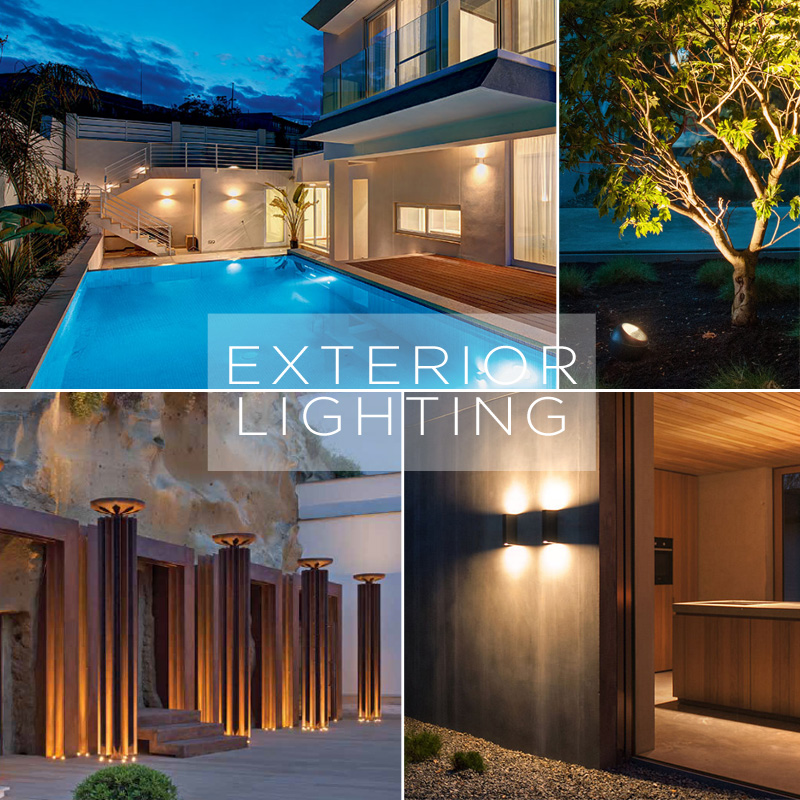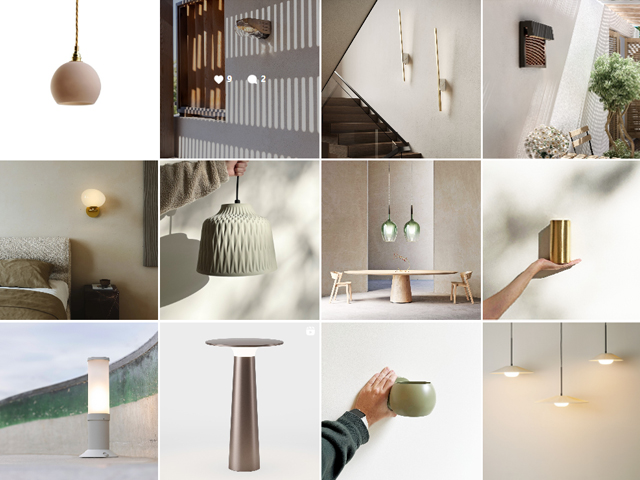A GUIDE TO EXTERIOR LIGHTING

When it comes to selecting a set of exterior lights, there are three key points of importance
to take into consideration.
These principles or ‘Three P’s’ are:
Purpose
Protection
Placement
Purpose refers to the ways in which exterior lighting will be utilised. Will it be used to simply light an entryway or will it be needed to light a pathway, patio, or garden? Perhaps exterior lights are required for illuminating the letters and numbers next to your home’s front door. Exterior lights can serve numerous purposes: entryway lighting is typically placed directly above or beside a door, ensuring that any set of front steps are well-lit. Risers or treads should also be highlighted and well-distinguished in order to facilitate safe passage in the dark. However, decks and patios can be lit according to their functions and task zones: for example, downlights can be set up in barbecuing and eating areas, while smaller up-lights or ambient wall lights can be set up along perimeters in other leisure spots and relaxation areas. Wall washing lights are ideal for highlighting feature walls and architectural designs whereas garden lights can be used to provide your exterior space with more depth in addition to accentuating feature plants.
Protection refers to a light fitting’s Ingress Protection rating. An IP rating is an international standard used to determine how effective a light fixture is at preventing foreign objects from penetrating its housing and damaging it. Comprised of two digits, the first digit of an IP rating defines the lights resistance to solid objects such as dust; the second defines the level of protection the light possesses against water. In essence, the higher a lights IP rating, the more dustproof and waterproof it is. IP44 is generally used as the industry benchmark for lights suitable for outdoor use. For light fittings that are fully exposed to harsh weather conditions, pursuing a greater level of protection offered by IP65 or higher may be necessary. IP68 – the highest Ingress Protection rating afforded a light fixture – indicates that it is completely dust-tight and can even be immersed in water to a certain depth without risking any damage. For light fixtures near water, shielding your fittings against corrosion is one other type of protection to consider. For lights used in particularly high salt areas, housing them in anodized aluminium and 316L marine grade steel is strongly recommended – premium grade, high quality powdercoats are also of great importance for protecting exterior lights in these areas. As an industry-leading brand and manufacturer of superior quality exterior lighting, Roger Pradier offers a 25 year guarantee against corrosion for aluminium lighting components. However, as with any outdoor fitting, performing regular maintenance can ensure your lighting lasts longer and functions as it should. Routine cleanings are also integral to keeping your exterior lights in good working order.
Placement refers to the position of exterior lights: are they going to be hidden under eaves or exposed out in the open? Will cabling be required? If so, what voltage – 12v or 240v? Will it run through concrete or plaster casing? IP ratings are also dependent on where a fixture is positioned. For lighting difficult-to-reach areas, a dedicated LED system can work wonders. As garden lighting is usually low voltage, it typically requires the use of a remote transformer or driver positioned some distance from the lights in a covered and waterproof location. For lights receding into the ground or concrete housing, a drainage-capable canister designed to protect the structural integrity of the fitting will be needed: this enables unrestricted access to the light if it requires repairs or removal. A broad range of canisters and accessories are available within our Luce and Light brand, a leading Italian supplier of advanced LED technology.





Enquire about this product